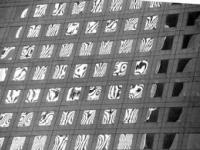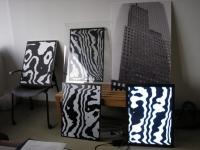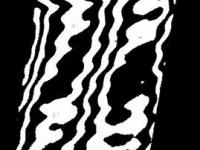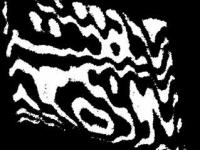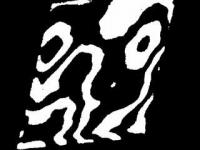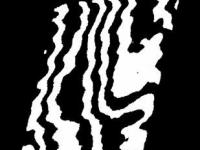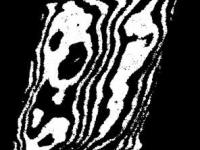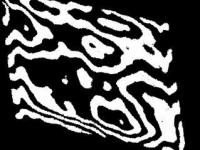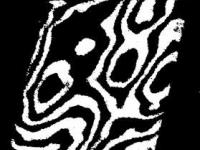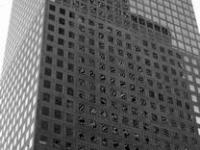
Artists Registry
Brooklyn NY United States
Artist's Statement
The very first photography class I attended in 1998 at the International Center of
Photography altered my view of the world forever. Photo One in black and white refined my visual perception to discern, patterns, light, shadow, texture. They are everywhere if you look for them
One late afternoon, driving along the West side highway, the striking op-art reflections undulating on the grid of the World Financial Center, captured my attention. Infused with late afternoon sun light, the perpendicularly aligned angular windows formed contrasting frames to the playful black and white free-form reflections of the architectural lines of the famous buildings across the highway: The World Trade Center towers.
Individually the abstract patterns, wildly expressive can stand on their own, together they form an arresting view of the towers.
Visible solely from a particular angle, the vulnerability of the fleeting reflections paradoxically mirror, in light of the ensuing events , the vulnerability of the majestic towers . There one moment, gone the next.
These images represent a quiet yet powerful effort to honor a sense of place, and invoke a time for reflection.
Irene Mamiye
Resume
Irene Mamiye’s images are a study of the collision between abstract expressionist art and digital photography. A continuous and unmediated self-searching condition infiltrates the work. The images, conceived subliminally, investigate concepts of self-narration through abstraction. The sentiment deals with a disruption of identity during the formative years. There is a search for shattered fragments of the self, once isolated yet stealthily blending within an unscathed panorama.
Mamiye confronts the limits of these aesthetics by blurring the lines and questioning the mechanics between the two mediums. Rupturing the traditional functionality of photographic equipment gives life to a painterly quality in the language of Pollack, Rothko and Richter.In many of these images, the artist constructs a mini-universe, a fleeting sculpture of quotidian objects selected for their three-dimensionality, pigment, transparency, and luminosity.In other images, these moments are extracted from nature and the similarity in effect is caused by the random manipulation of light, color and movement. Once captured these sculptures are immediately destroyed never to be re-created as those moments in nature are never to recur.
The camera becomes a testimonial instrument, supplying the viewer with the experience of a temporary universe. This methodology serves to confront the truth while distorting and transforming the language of photography into a psychological phenomenon. It touches on themes of reality and illusion, presence and absence. The result is large-scale environments that induce a delirium and invite the viewer to shed the realm of convention and consciousness.
Irene Mamiye’s images serve the self, and the journey toward identity through one's subjectivities. The photographs become an access point into the deep recesses and tensions of existence, consciousness, and the search for truth in the manipulation of forms.
Undulating light within the illusory abstract striations of alternating lines of vivid color and repetitive patterns irrupts the viewer's expectation of stability and solidity. This effect is akin to a light painting, that stirring one from within, purging one's unconscious thoughts and emotions.
This state of ungoverned spontaneity registers an immediate impulse in the viewer. The camera's gestural strokes usurp the object's representational value, intentionally presenting the viewer with visual and conceptual dissonance.
The contrast of incandescence with a composition of bold, sensuous lines has an absorbing effect, which is intensified by the scale of the images.
The artist favors archival C-prints in single-print editions, presented in monumental size and mounted borderless on museum board and gallery plexi or mounted on aluminum.
